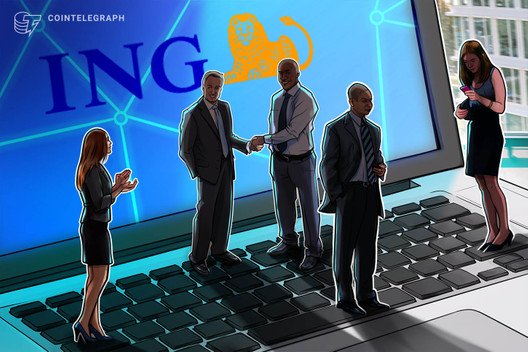This week, a number of banks shed light on their respective crypto-related projects, following the recent expansion of JPMorgan Chase into the field.
IBM was the big mover. A joint announcement by IBM and Stellar (XMR) said that as many as six global banks might issue their own stablecoins on IBM’s blockchain-powered payments network, dubbed “Blockchain World Wire” (BWW).
The question now is whether this marks a turning point for cryptocurrency’s use, or if it merely continues the experiments that have marked the early stages of digital money. While quite a few financial institutions seem ready to go blockchain and create tokens in a bid to streamline cross-border payments, some still choose to set the technology aside.
Citigroup, the corporation behind one of the world’s top-20 banks by asset value, revealed earlier this week that it was abandoning its “Citicoin” project to focus on more conventional remittance methods like SWIFT. The bank’s reasoning seemed focused on preserving the current forms of inter-bank transfers as a proven and universal method.
Can those bank-issued coins be called “cryptocurrencies”?
When JPMorgan Chase announced that it built its own digital token based on a private Ethereum (ETH) blockchain last month, the crypto community seemed largely skeptical.
Nathaniel Popper, author of the book “Digital Gold, a History of Bitcoin,” tweeted back then:
“The JPM Coin makes it possible to move dollars between JPMorgan bank accounts instantly. That raises the question: Why was it not already possible to move dollars between two JPMorgan bank accounts instantly?”
Given that the JPM Coin is only available for private use within the inner circle of the banks’ clients, one should be hesitant to even call it a cryptocurrency, according to at least one expert.
Hartej Sawhney, a blockchain expert and co-founder of Hosho, a startup protecting investments and providing multiple smart contract services, told Cointelegraph in an email:
“Recently, banks and media have had a field day misusing the word cryptocurrency. There is no such thing as a ‘cryptocurrency’ without open consensus or permissionless participation. Announcing a new ‘coin’ was simply a marketing play for J.P. Morgan. Bitcoin for example, is open source, permissionless, strictly limited in quantity, and has no account fees.”
Not only is the JPM Coin permissioned and available only to institutional customers who have been cleared via JPMorgan Chase’s Know Your Customer (KYC) precautions, Sawhney added, it is also pegged 1:1 to fiat currencies held by the bank. That is fundamentally different from what cryptocurrencies constitute, he argued:
“Anyone can use a cryptocurrency, and anyone can participate in its consensus system without seeking permission from anyone else.”
Regulated institutions will act
Michael Dowling, CEO and founder of FairX, a financial services company involved with banking and digital assets, and former chief technology officer at IBM’s blockchain arm, also distinguishes bank-issued coins from conventional, “pure-play” cryptocurrencies akin to Bitcoin (BTC), XRP and XMR. Bank-backed tokens are “cryptocurrency implementations of fiat currency,” which are commonly referred to as “stablecoins.” He told Cointelegraph:
“A lot of people are obsessed with this ‘token’ thing, but at the end of the day a bank is a really fancy ledgering company with amazing security; the key to bank’s successful use of blockchain tech, in a practical way, is to shift some of the authentication of a user from the centralized bank to the user’s own device, proven by a cryptographic ledger. That’s really what this bank-issued coin is really all about — it’s still the same USD ledger, its authentication for who is allowed to change the ledger has shifted from username/password at the bank to pub-pri key cryptography in a distributed fashion.”
Downey then summarized his statement: “I do NOT believe regulated institutions will announce their own pure-play cryptocurrencies, but I am absolutely certain they will announce their own deposits on ledger.”
Interestingly, while JPMorgan Chase’s move was largely reported as a first for a United States bank (and any major lender), New York-based Signature Bank rolled out a similar feature earlier in December 2018. Dubbed the Signet Platform, the private blockchain allows the banks’ clients to move their money “in 30 seconds,” just like the JPM Coin — and it is also pegged to the U.S. dollar. It comes as no surprise that Signature’s coin was largely overlooked, given how the bank compares to JPMorgan Chase size-wise: The former has just $45 billion in assets, while the latter wields more than $2 trillion.
When announcing the feature, Signature Bank co-founder and CEO Joseph J. DePaolo seemed particularly bullish on the use of private blockchains for financial institutions. He told Forbes:
“We have to do this, otherwise we’re not going to exist. […] If you’re not involved in blockchain, in five years, you won’t be around as a bank.”
DePaolo’s viewpoint seems to echo the findings of Citigroup’s “Bank of the Future” report, which suggests that fintech companies that are actively disrupting the banking market with new technologies are driving out its longstanding participants — or at least compelling them to give up a large portion of their margins, a traditionally important source of income for banks. Specifically, the paper estimates that by 2025, major North American banks could lose 34 percent of profit from mainstream areas such as payments, investments and personal lending.
What is a bank-issued coin’s purpose?
Primarily, banks tend to pick up blockchain for instantaneous cross-border payments. The technology shows a lot of potential within that field. Blockchain reportedly allows performing international remittance “in near real-time,” according to the IBM website, while normally they take three to five working days to complete within the existing infrastructure. Moreover, transaction costs can be saved as third-party intermediaries get removed from the process (according to research from McKinsey, the average cost for a bank to execute a cross-border payment through correspondent banking costs $25 to $35).
The two largest blockchain projects aiming to streamline cross-border remittance for global banks are hosted by Ripple and IBM Blockchain. Ripple has at least two blockchain-powered payment tools for those purposes, called xRapid and xCurrent (the main difference between them is that xRapid uses XRP, the company’s native token, while the latter works with fiat currencies). IBM, in turn, oversees its Blockchain World Wire (BWW) payment network operating on the Stellar (XMR) blockchain, which completed its beta in September 2018.
At this point, both Ripple and IBM Blockchain seem to be a force to be reckoned with: RippleNet reportedly has more than 200 clients, while BWW, which has been around for considerably less time, is currently used by 54 banks, as Jesse Lund, global vice president of IBM Blockchain, told Cointelegraph. Both of them are networks that are open to a wider amount of financial institutions, while some banks — like the aforementioned JPMorgan Chase — want to deploy their own private ledgers.
Notably, unlike Ripple, IBM’s BWW supports different digital assets within its blockchain, including bank-issued coins: Just recently, Cheddar reported that six international banks — such as Brazil’s Banco Bradesco, South Korea’s Bank Busan and the Philippines’ Rizal Commercial Banking Corporation — have signed letters of intent to issue their own stablecoins backed by their national fiat currencies on IBM’s network. “These are expected to add Euro, Indonesian Rupiah, Philippine Peso, Korean Won and Brazilian Real stable coins to the network,” Lund told Cointelegraph in an email, adding:
“Ultimately, we hope to see a global financial network that represents a real-time facility for moving money from anywhere to anywhere — where foreign exchange is just an inherent part of the process that happens automatically through the use of an expanding digital asset ecosystem.
“World Wire can use fiat currency, lumens or stable coins. This is a completely new kind of payments infrastructure than traditionally used, and it differs from SWIFT and other approaches.”
Downey also highlighted this feature as a major advantage for the network:
“While IBM’s service does use a pure-play crypto as a settlement asset as an option, I believe the legitimate institutions will use fiat-stablecoins issued by banks as settlement assets instead. That stabs Ripple in the heart — why use XRP if I can use….an acknowledged and accepted currency?”
Cointelegraph has reached out to Ripple to get a further comment for this article, but they failed to prepare a statement before press time.
Ripple’s CEO, Brad Garlinghouse, has criticized the concept of bank-issued digital coins (which he calls “bank coins”) and specifically the JPM Coin in the past, citing its centralized structure, among other things. He has also argued that the JPM Coin lacks the interoperability that would make it a significant innovation:
“This guy from Morgan Stanley was interviewing me last week, and I asked him, so is Morgan Stanley going to use the JPM Coin? Probably not. Will Citi use it? […] Will PNC? And the answer is no. So we’re going to have all these different coins, and we’re back to where we are: there’s a lack of interoperability.”
Downey agrees with that statement. “It [the JPM Coin] MUST be interoperable between banking institutions for it to work properly,” he told Cointelegraph. “Otherwise, we’re just swapping bank currencies.”
Bank-issued stablecoins vs. public stablecoins
Stablecoins — with their ability to overcome crypto’s infamous volatility — have become widespread during the bear market, especially among more compliance-oriented players.
Projects like USD Coin (USDC), launched by payments company Circle in conjunction with Coinbase, the Winklevoss twins-backed Gemini dollar, Paxos and Facebook’s secretive project are among the most notable examples.
Recently, Jeremy Allaire, co-founder and CEO of Circle, has argued that, as the sector continues to see new market participants, stablecoins using an open-standards approach will prevail, while also welcoming Facebook’s still-to-be-confirmed plans:
“That’s [Facebook’s reported plans are] very, very positive in our view overall. The approach that we’ve taken is to create a consortium model. When we think about a standard for how fiat money works on the internet, it’s really critical that it’s an open standard that many companies can implement, that has an self-governance mechanism around it that can evolve both a technical standard as well as a membership framework.”
Essentially, Allair argued that creating “an HTTP for money on the internet” that could support global participation from multiple actors is “ultimately going to be much more successful than a single company issuing a cryptocurrency themselves.”
However, Downey told Cointelegraph that stablecoins that are not issued by banking institutions might have a significant disadvantage over the public ones run by startups:
“Only banks can ‘take deposits,’ which have a specific meaning with specific legal protections around the assets held on deposit in case of bankruptcy. Some, such as Gemini, have set up ‘trusts’ to park the cash, but it requires costly monthly attestations that come, frankly, for free as a bank. In addition, the Gemenis, the Circles, etc. all seem to be releasing their coins for the purpose of de-risking within their platforms. Very short term thinking, and no one is going to do real business (with real volumes with real value) using that setup. That’s what banks are for.”
Notably, Ron Karpovich, global head of e-commerce solutions at JPMorgan Chase, has recently raised a similar point in an interview with CNBC’s Squawk Box.
In response to a question as to how the top U.S. bank is ready to compete with new actors that can employ blockchain and cryptocurrencies to offer the same services as the industry’s veterans, but with cheaper fees, Karpovich said:
“Ultimately behind the scenes, they [crypto innovators] are going to have to use a bank to move funds. There’s more partnership instead of competition in that space. […] When it comes to margins and capabilities — payments is never something that grows in margin, nobody wants to pay for a payment. That’s one of the hardest parts of this process: you have limited resources in the capability to sell, so you need highly efficient and large players.”
“Citicoin”: The four-year project cut short in favor of more traditional remittance methods
Citigroup, unlike other mainstream institutions that couldn’t resist mentioning the word “blockchain” in their press releases at the time when it was popular to do so, has kept its cryptocurrency operation underground. It first surfaced back in July 2015, when International Business Times interviewed Ken Moore, head of Citi Innovation Labs. Moore told the publication that they were studying distributed ledger technology (DLT) for “the last few years.” Moreover, he added, the lab had constructed three separate blockchains and a cryptocurrency for test purposes:
“They [the three blockchains] are all within the labs just now so there is no real money passing through these systems yet, they are at a pre-production level to be clear. […] We also have an equivalent to bitcoin up and running, again within the labs, so we can mine what we call a ‘Citicoin’, for want of a better term. It’s in the labs, but it’s to make sure we are at the leading edge of this technology and that we can exploit the opportunities within it.”
Moore also specified that “most of our efforts have been focused on payments; trade probably being a second runner.”
Now, when JPMorgan Chase has just rolled out its own cryptocurrency to speed up its in-house transactions, Citigroup announced it was putting its crypto project on hold. Specifically, Gulru Atak, global head of innovation for treasury and trade solutions, said in one report that they were reviewing methods for cross-border payments, but with a shorter-term effect. Citigroup is not abandoning blockchain, she said. But, for now, it is looked at as merely an adjunct to SWIFT.
Indeed, SWIFT is a 46-year-old interbank messaging service and a co-operative owned by about 11,000 member banks in more than 200 countries. Its network handles as much as $5 trillion worth of transactions per day worldwide, as per U.S. Department of Treasury data, which allegedly includes more than half of all high-value, cross-border payments, making SWIFT a top player when it comes to sending money from country A to country B.
“Citi’s experience was just like JPM’s, with one big difference,” Downey told Cointelegraph:
“Both were prototypes, and both focused on internal transfers. JPM has been investing in blockchain tech for years now, and I think they needed to start justifying those investments, and that’s why they announced — with much fanfare — a prototype that works….only within JPM. Citi’s approach is to focus on faster payments through SWIFT. I don’t believe it was a ‘this solution can’t work,’ it was more of a ‘we choose to focus on different solutions while other players focus on cash on chain’.”
SWIFT is aware of blockchain and its advances within the cross-border payments industry. At some point, the banking juggernaut even ran a proof-of-concept (PoC) of blockchain to see if it could pick up the technology for itself, but was left somewhat disappointed with the results. In March 2018, the co-operative declared that blockchain was not ready for mainstream use as “further progress is needed before it will be ready to support production-grade applications in large-scale, mission-critical global infrastructures,” although the tests went “extremely well.”
That seems to be the main consensus for traditional banking players that have chosen to stay away from blockchain: The technology has a lot of potential but is not mature enough to be picked up for industrial-scale use. The list of such lenders includes the Bank of Canada (BoC), the Spanish bank BBVA and the Bank of England, among others.
Sawhney told Cointelegraph that, whatever the outcome of the competition among blockchain-powered platforms and SWIFT is, the nearly 50-year-old conventional system is now being forced to update. Indeed, apart from testing blockchain, in February 2017, the banking network launched its Global Payments Innovation (GPI) service. While GPI promised “faster, same day use of funds,” it is technically a messaging system, and despite supporting real-time, end-to-end tracking, it is not blockchain-based.
“The battle is on for near-instant transactions, complete transparency and thorough transaction tracking, low clearing costs, and compatibility with any currency or asset type,” Sawhney said. “It has just begun, we are still a long way from getting a firm answer on which solution will dominate the future of the global payments industry.”









